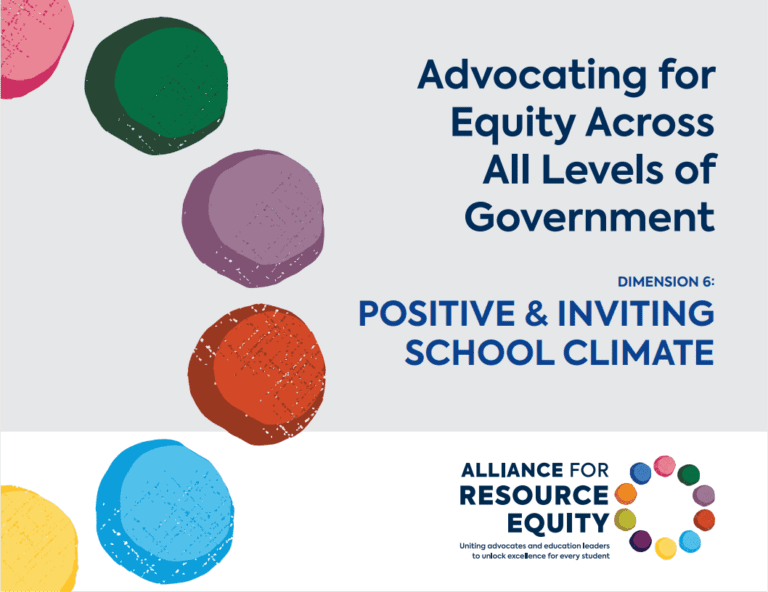Common Causes of Inequity
- Insufficient staff capacity and support: Without necessary time, expertise, and/or cultural competence, it can be challenging for school leaders, teachers, and support staff to develop positive relationships and respond to student behaviors in ways that effectively and consistently promote a safe, supportive, and positive learning environment.
- Unclear institutional vision: Schools may struggle to facilitate a positive and inviting climate because of unclear and incomprehensible visions for student safety, supportive relationships, and family engagement.
- Inconsistent programs and practices: Districts may struggle to support all students’ interpersonal growth if social-emotional learning opportunities are not consistently implemented across schools.
Key Questions to Explore
- How do rates of office discipline referrals, suspensions, and expulsions vary across student groups and/or across schools in our district?
- Based on student surveys, what percentage of students report feeling safe at school? Are there differences across student groups or schools?
- What strategies for building strong student-student and student-teacher relationships are used across our district?
- Based on family surveys, what percentage of families report being informed and consulted about the academic or non-academic lives of their children at school?
What Does the Data Say About Positive & Inviting School Climate?
Our interactive data resource will help deepen your understanding of how dimensions of resource equity like Positive & Inviting School Climate play out in schools and districts across the country. As you navigate these interactive stories, you’ll learn how system shifts can lead to more equitable and better student experiences and outcomes.
Positive & Inviting School Climate Resources
Related Dimensions
No single dimension of education resource equity can unlock every student’s potential—but when dimensions are combined to meet students’ distinct needs, they are a strong foundation for unlocking better, more equitable experiences in school.
Explore the Student Supports and Intervention dimension as disciplinary actions and social-emotional learning opportunities often require targeted interventions with specialist staff.




